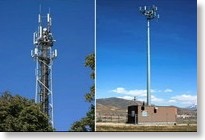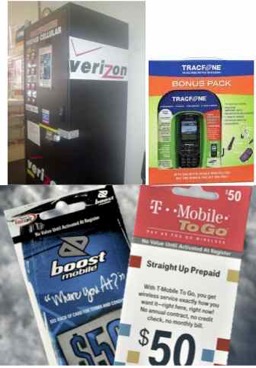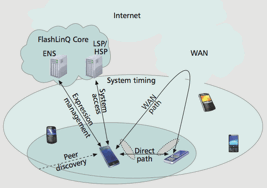Some Possible New Year's Resolutions for the Cellular Industry

As we approach the New Year, here are some constructive suggestions for the cellular industry to think about as New Year’s resolutions. Long time readers will recognize that many have been discussed before in other contexts. Let me state first that I am a long time admirer of the cellular industry, its dynamic growth, and its general record of technical innovation. The cellular industry has also done much to improve public safety through its support for E-911, Amber Alerts, and programs to provide cell phones for domestic violence victims. But this industry has several blind spots as it has accumulated political power and FCC influence comparable to the power formerly held by entities such as the pre-divestiture AT&T, NAB, or the pre-1990 Motorola. sic transit gloria mundi
The purpose of this post is to point out constructively some of these blind spots that appear not to be in basic conflict with the fundamental goals of the industry in the hope that they may reconsider their positions in at least some of these areas. I note that while the main cellular players once were in strong opposition to the bidirectional amplifier/BDA issues now in Docket 10-4, they have moderated their position and appear to be working with responsible BDA manufacturers on technical standards for BDAs that control interference. I hope that similar reexamination is possible in the areas below:
1. Wireless technology innovation. The focus of the cellular industry is that innovation is good, but that the key to innovation is more licensed spectrum for their industry. They are happy with the current level of regulation so everyone should be also. This is clear from CTIA’s comments and reply comments in the Wireless Innovation NOI. They see no need to expedite deliberations of new technology, saying “Simply put, even for good ideas with broad appeal, resolution unfortunately can take a long time notwithstanding the desire of parties to speed the process along”. The fact that the endless drawn out FCC spectrum deliberations stifle capital formation for technical innovators is no concern for mainstream CMRS players with positive cash flow.
But Qualcomm was once a startup in an era when it got its key regulatory decision in 2 years after formation. The CDMA technology that this startup pioneered supplies a major fraction of the 2G market (VZW and Sprint) and is the core of all world’s 3G systems. But this type of disruptive wireless innovation os getting to be impossible due to regulatory stagnation but for the cellular industry and for other spectrum users that compete for cross elastic spectrum. Sadly, the cellular industry is firm with the status quo here.
Wa - harmony (Japanese)

What is the industry doing about this? Are they trying to increase sidetone levels so people don’t shout when using cell phones? Are they trying to make it easier to switch the ringer to a vibrate only/ “manners mode” as in Japan where all carriers have voluntarily agreed that a press of the “#” key toggles the unit to and from vibrate only mode? Are they researching ways for theaters and restaurants where people really want a semblance of quiet to use Bluetooth or a similar link to switch phones automatically to vibrate only? Kudos to Motorola for inviting Dr. Norman to talk on this issue. How much of this type of dialogue is going on now in the industry?
UPDATE
Suggested reading for cellular industry managers: “Wild Night at Philharmonic After Phone Interruption” describing a January 10 incident “in one of the quietest parts of the final movement of a gorgeous New York Philharmonic performance of Mahler's Ninth”.
3. Cell phones use in vehicles. Technology should improve life, not threaten it. In September 2011 NTSB recommended a ban on cell phone use in commercial vehicles (trucks and buses) after investigation of a Kentucky crash that killed 11 people. The industry was silent except for an e-mail message to your blogger saying “The wireless industry … does not oppose legislation that restricts the use of wireless communication by drivers." (This quote was never printed or posted anywhere else as far as can be determined.)
Then in December 2011 NTSB recommended to “ban the nonemergency use of portable electronic devices (other than those designed to support the driving task) for all drivers”. This time CTIA was no longer silent, saying “ As far as talking on wireless devices while driving, we defer to state and local lawmakers and their constituents as to what they believe are the most appropriate laws where they live.” This is not leadership, this is non opposition. If I was involved in a product or service that resulted in death on a regular basis as an unintended byproduct I would be a lot more concerned. Especially since talking in cars is not the main use of cell phones.
The NTSB recommendations are not perfect. For example they do not deal with new technology since all NTSB can do is investigate past accidents. Why doesn’t the industry do something more proactive like start a standards committee, or encourage DOT to start one, that can certify which technologies are safe enough for use in vehicles?
(But kudos to Sprint for breaking with the crowd and being a cosponsor of Oprah’s Oprah’s No Phone Zone website and its “No Phone Zone Pledge”.)
4. RF safety. Most of the cellular industry thinks that the public should be happy with their statements that cellphones meet FCC standards and are therefore safe. A decade ago, the industry fought FCC over the proposal to stop hiding SAR ratings for cell phone models in an obscure unmanageable database. As a previous blog post here has as a headline, “CTIA: Maybe Your RF Safety PR Strategy Isn't Working?” The past year has seen CTIA boycott San Francisco and got to court (with an initial partial victory) over a local ordinance requiring point of sale disclosure of SAR data. (The same data that Verizon Wireless openly discloses on their website for models they sell.)
Perhaps the industry does not want you to know about the secret of OETB65C. Stalin once said, “The people who cast the votes decide nothing. The people who count the votes decide everything.” So the SAR standards for cellphones in Sections 2.1091 and 2.1093 were subject to a notice and comment rulemaking that made 1.6 W/kg the SAR limit. But how is that really determined? In practice through the procedures of OETB65C which gives the manufacturers a lot of leeway as to what spacing from the simulated body they can use for measurements in the body, even if they do not provide a holder that would implement that distance and even if they don’t warn users not to put the device in their pocket. Both Time magazine and your blogger have written about this issue, but there seems denial at both FCC and industry on the issue.
There is no proof that cell phone radiation is dangerous. Indeed, some of the brain cancer claims made as clearly outrageous. (Considering there is no proof that cell phone radiation causes any pathology, why the focus on brain cancer - except that it is a very scary diagnosis.) But the web site of CTIA’s French counterpart is a lot more pragmatic than US industry sites on the risks and unknowns as well as the fact that some users may want to take extra precautions. The Swiss counterpart of EPA also has a site with pragmatic and practical information lacking in industry and government sites in the US.
5. Base stations and their environments. One of the issues driving the need for more CMRS spectrum is the difficulty of building base stations, particularly in suburban areas. Cellular capacity is a function of 3 factors: technology (e.g. 3G vs. 4G), infrastructure (number and nature of base stations, and amount of spectrum. Limits on one factor press demand on the others. For 2 decades industry has pressed Congress and FCC to limit the ability of local governments to control base station deployments with limited success. The reason is simple for the limited progress; as Tip O’Neill said famously, “All politics is local”. As long as base station designs “look like they are designed by engineers” with no regards for their surroundings in most cases, the neighbors will object.
This month’s IEEE Spectrum reports on a UK design contest for power pylons sponsored by a major electric utility, a national government agency, and the architect’s professional society, which resulted in several novel designs including the one above. Why can’t the US cellular industry help sponsor a similar contest for bold new ideas in base station design? The cost would be small compared to what they are spending on they lobbying war with the broadcasters as present.
6. “Spectrum scoring” or “How to count to 500”. The cellular industry originally demanded 800 MHz of new spectrum for CMRS although they are now accepting of the 500MHz NBP goal. But what spectrum counts towards the 500 MHz goal? Does every single Hertz have to be only in spectrum that meets standards developed in Europe to be manufactured in China? There are many types of wireless innovation other than making iPhone and iPad clones. Some of them involve using spectrum more efficiently. The focus on meeting international standards means that only innovators who want to plow through the complex international standards process can get market access in the US. Actions like PacTel’s decision to go with CDMA in the 1980s apparently is beyond consideration now.
While your blogger has no views against giving more spectrum to CMRS, many of us think the 500 MHz goal is impossible under the conditions for “counting” that the cellular industry has implicitly set with factors like nationwide 24/7 1000 ms/s access and in 3GPP specified bands. Although LTE systems can use unpaired spectrum, most of the spectrum on their wish list appears to be paired and symmetric. If FCC and NTIA come up with spectrum that doesn’t that meets all these criteria, does it “count”?
7. Provide communications for niche applications that otherwise contend for spectrum with CMRS. After the success of the iPhone, the CMRS focus seems to be on “killer apps”/knock out new products. Niche markets are of little or now interest unless they can be served with apps on standard hardware. Who needs little $100M markets. This is understandable from the MBA viewpoint.
But here is another viewpoint: Some niche markets compete for spectrum at FCC that is the same or comparable spectrum to what the cellular industry seeks. For example the medical community is clearly seeking more spectrum for short range applications. It is clear to many of us, even some in FCC, that the existing use of wireless microphones in UHF TV band “white space” is not sustainable in the long term except perhaps for uses involving only a few microphones like small churches and conference rooms - not theaters and major concerts. This is because of cellular industry pressure for UHF incentives auctions that will eventually tie up the same spectrum.
In the past, there was no alternative for the CMRS industry to serve these and other wireless niches. However, with the spectrum leasing provisions of Subpart X of Part 1 and today’s femtocell technology it is possible for cellular carriers to lease short range spectrum to users with other than standards cellular modulations/physical layers and without connection to the public network. A good example is the Qualcomm FlashLinq™ technology that will allow users to connect directly to each other with non standards modulations on spectrum leased from and under the control of a CMRS carrier. Maybe the specifics of FlashLinq™ are not perfect for the CMRS community, but it clearly shows the feasibility of new types of spectrum use in CMRS spectrum. Even if it is not a billion dollar market, its ability to “soak up” other spectrum uses that would otherwise compete for spectrum might make it attractive to openminded CMRS firms.

Until recently, the largest prepaid operator, TracFone, allowed users to activate a phone bought anonymously and “skip” the step to report name and address. However, the option of buying with cash bagfuls of prepaid phones at Walmart, activating them over the web with a false name and address, and selling them for criminal use is still quite real. Isn’t it odd that we more concerned about over-the-counter sales of Sudafed and Plan B than we are about bagfuls of anonymous cellphones?
Many countries require some identification before prepaid phones can be activated. This is a complex issue both because of the size of the market and the appeal of prepaid phones to market sectors who need them for legitimate economic and safety-related reasons but, as we know from the voter ID controversy, may lack or be unwilling to identify themselves in the standard ways. While I sincerely hope we never have a cellphone-related IED attack in this country, such an event would force a PATRIOT Act-like knee jerk reaction that could be more draconian that a deliberate process now to address the situation.
UPDATE
For those of you who wonder about the temerity of an industry outsider raising such questions about the cellular industry, let me point out the Verizon $2 “payment fee“/“convenience charge” kerfuffle that started just as this blog was first posted and ended a day later. Clearly, VZW, the largest cellular carrier in the US was out of touch with its customers on this issue and had to beat a hasty retreat. Perhaps the industry is also out of touch on the above issues?
UPDATE 2
On 1/7/12 CNN posted an article by bestselling author Bob Greene entitled “Is 2012 the year to hang up the phone?”
Story highlights:
There is growing chorus of officials, employers urging less cell phone useHe says NTSB warns against use in cars; bosses pushing back on personal calls at workHe says cell-phone distractions even affect surgeons and nurses; cut productivityIt may be impossible to take people's freedom of cell use away from them
So your blogger is not the only one seeing cell phone use backlash. Perhaps if the industry was more sensitive to the concerns listed above it might be in their own interest?






![Validate my RSS feed [Valid RSS]](valid-rss-rogers.png)

